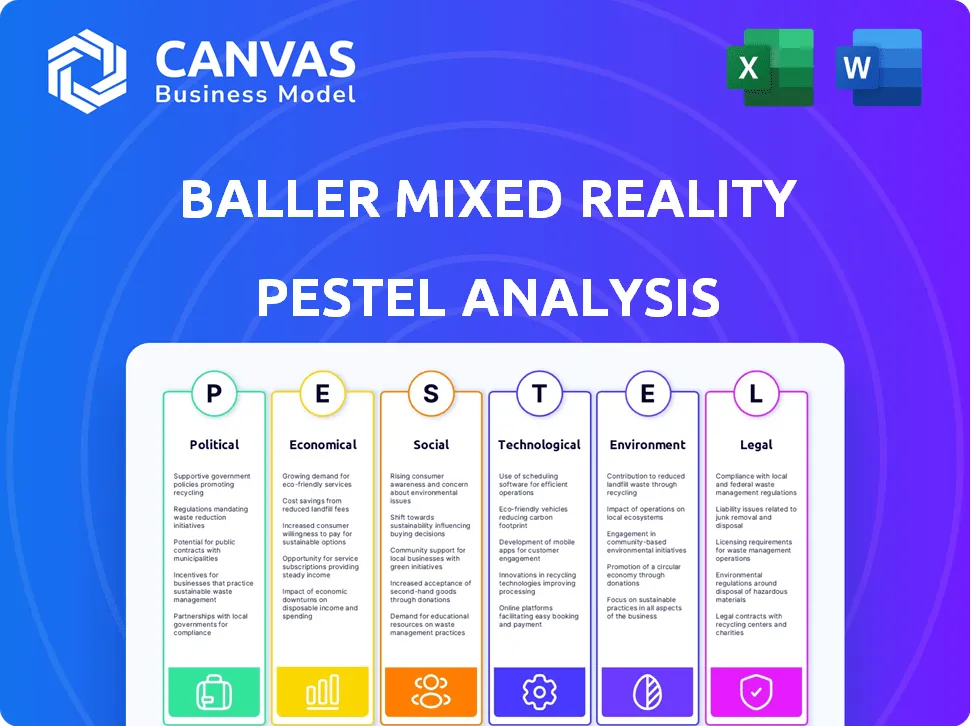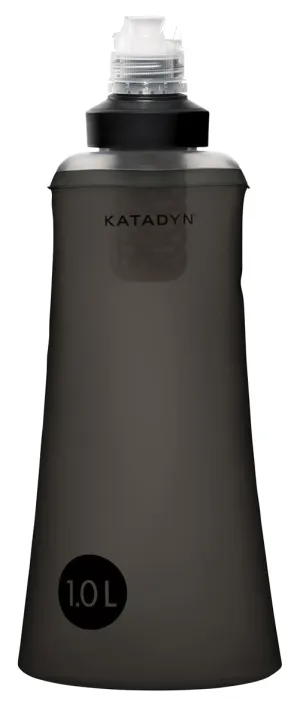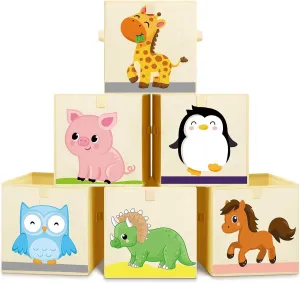Welcome to the future of collectibles, where Baller Mixed Reality is pioneering an exciting intersection of augmented reality and NFTs! In this PESTLE analysis, we delve into the critical factors shaping Baller's landscape—from political and economic influences to technological advancements and environmental considerations. Discover how each element plays a role in crafting a unique market for digital collectibles autographed by legends in sports and entertainment. Dive in below to explore the fascinating dynamics at play!
PESTLE Analysis: Political factors
Support for digital economy initiatives
The digital economy is increasingly recognized by governments worldwide. In 2021, global digital economy revenues were estimated at $4.9 trillion, with projections of $8.6 trillion by 2026. Countries like the United States and Canada have launched initiatives such as the Digital Economy Strategy, aiming to increase GDP by 2% by encouraging tech innovation. In the European Union, the Digital Compass report outlines ambitious goals to reach 75% of households with a high-speed internet connection by 2030.
Regulation of digital assets and cryptocurrencies
Regulatory frameworks surrounding digital assets are evolving. For instance, in 2021, more than 80% of the world's governments were either discussing or actively implementing regulatory measures around cryptocurrencies. The Financial Stability Board reported that the total market capitalization of cryptocurrencies exceeded $2.5 trillion in mid-2021, triggering regulatory conversations across various jurisdictions.
Government incentives for tech startups
Government initiatives to bolster tech startups are becoming more common. In the United States, venture capital funding reached $156 billion in 2020, with government grants and subsidies supporting nearly 20% of tech startups in the early stages. Programs like the Small Business Innovation Research (SBIR) grant scheme funded over $3 billion in 2020 alone for startups focusing on innovative technology.
Potential taxation on digital collectibles
Tax implications on digital collectibles vary significantly by jurisdiction. In the U.S., the Internal Revenue Service (IRS) treats NFTs as property for tax purposes. This means that capital gains tax applies, which was estimated to bring in around $1 billion in potential tax revenue by 2022 from digital assets. In the European Union, discussions around the VAT (Value Added Tax) treatment of digital goods are ongoing, with potential impacts noted in member states.
International relations affecting market access
International relations significantly influence technology markets. For example, the U.S.-China trade tensions have resulted in tariffs affecting technology imports, impacting over $370 billion in goods as of 2021. Additionally, the EU's GDPR has created barriers for companies operating across borders, affecting how Baller Mixed Reality may strategize its market entry into Europe.
| Factor | Statistic | Source |
|---|---|---|
| Global digital economy revenue (2021) | $4.9 trillion | IMF |
| Projected global digital economy revenue (2026) | $8.6 trillion | IMF |
| Venture capital funding in the U.S. (2020) | $156 billion | PitchBook |
| SBIR funding (2020) | $3 billion | SBIR.gov |
| Potential U.S. tax revenue from digital assets (2022) | $1 billion | IRS Estimates |
| U.S.-China trade goods impacted (2021) | $370 billion | U.S. Trade Representative |
[cbm_pestel_top]
PESTLE Analysis: Economic factors
Growth in the digital collectibles market
The global digital collectibles market was valued at approximately $1.8 billion in 2021 and is forecasted to reach $9.1 billion by 2028, growing at a CAGR of 26.7%. The increasing popularity of NFTs and blockchain technology has significantly driven this growth.
Increased investment in augmented reality technology
Investment in augmented reality (AR) technologies has seen substantial growth, with the AR market projected to reach $198.17 billion by 2025, up from $11.14 billion in 2018, representing a CAGR of 46.6%. The integration of AR in various sectors, including gaming and collectibles, is catalyzing this trend.
Fluctuations in cryptocurrency value impacting sales
Cryptocurrency volatility significantly impacts the sale of NFTs and digital collectibles. For instance, Bitcoin reached an all-time high of approximately $69,000 in November 2021 and subsequently dropped to around $19,000 in June 2022, affecting buyer confidence and purchasing power within the NFT space.
Consumer spending trends on entertainment and collectibles
Consumer spending on entertainment and collectibles rose to $877 billion in the United States in 2021. This reflects a spending increase of 16% compared to 2020. Particularly, NFT sales reached approximately $25 billion in 2021, marking a significant shift towards digital goods.
Economic downturns affecting discretionary spending
Economic downturns have historically led to reductions in discretionary spending. For instance, during the COVID-19 pandemic, U.S. consumer spending on discretionary goods fell by 30% in April 2020. As per forecasts, such downturns may cause a decline in NFT market sales as consumers prioritize essential spending.
| Economic Factor | Value | Year |
|---|---|---|
| Value of Digital Collectibles Market | $1.8 billion | 2021 |
| Projected Value of Digital Collectibles Market | $9.1 billion | 2028 |
| Investment in AR Technology | $198.17 billion | 2025 |
| Bitcoin All-Time High | $69,000 | November 2021 |
| Bitcoin Low | $19,000 | June 2022 |
| US Consumer Spending on Entertainment | $877 billion | 2021 |
| Growth in NFT Sales | $25 billion | 2021 |
| Decrease in Discretionary Spending | 30% | April 2020 |
PESTLE Analysis: Social factors
Sociological
The market for NFTs and unique collectibles has seen a significant increase in consumer interest. In 2021, the global NFT market generated approximately $22 billion in sales, compared to only $100 million in 2020, indicating a growth trend of over 21,000%.
Celebrity culture plays a crucial role in driving engagement and sales within the NFT space. Reports show that 64% of NFT buyers are motivated to purchase due to endorsements from celebrities and influencers. Platforms like Twitter and Instagram amplify this effect, where key endorsements can lead to immediate sales spikes.
The shift towards virtual communities and experiences has been accelerated by the pandemic, with more than 60% of respondents in a survey by Deloitte stating they engage in online communities. This change highlights the growing relevance of virtual social interactions, creating a market conducive to products like AR NFTs.
Societal acceptance of digital assets has been increasing, with a recent study indicating that 63% of adults in the U.S. believe that cryptocurrencies and NFTs represent the future of finance. Acceptance among younger demographics is particularly pronounced, with 83% of millennials finding NFTs appealing.
Social media influences purchasing behavior significantly. According to a survey conducted by eMarketer, 49% of consumers stated that social media impacts their purchase decisions for digital assets. User-generated content, particularly on platforms like TikTok and Instagram, has proven effective in boosting sales.
| Social Factor | Statistical Data |
|---|---|
| Growth of NFT Market | From $100 million in 2020 to $22 billion in 2021 |
| Consumer Motivation from Celebrity Endorsements | 64% of NFT buyers influenced by celebrities |
| Engagement in Online Communities | 60% of adults in the U.S. participate in virtual communities |
| Acceptance of Digital Assets | 63% of adults see NFTs as the future of finance |
| Influence of Social Media on Purchases | 49% of consumers influenced by social media |
PESTLE Analysis: Technological factors
Advancements in augmented reality technology
The augmented reality (AR) market is projected to reach $198.17 billion by 2025, growing at a CAGR of 43.8% from 2021. The increasing availability of AR hardware, such as smart glasses and mobile devices capable of AR experiences, enhances user engagement.
Integration of blockchain for NFT authentication
According to a report by Statista, the global blockchain technology market is expected to grow from $3 billion in 2020 to $39.7 billion in 2025, at a CAGR of 67.3%. This growth drives the development of secure, verified NFTs via platforms such as Ethereum, which as of October 2023, has a market capitalization of approximately $223 billion.
Development of user-friendly platforms for buying/selling NFTs
The NFT marketplace generated $25 billion in total sales in 2021. By the end of 2022, the number of unique NFT buyers reached around 2.5 million, indicating a growing need for intuitive platforms. As of Q1 2023, platforms like OpenSea and Rarible serve millions of users, with OpenSea alone reporting over $5 billion in transaction volume.
Enhancements in social media for NFT promotion
Social media platforms play a crucial role in NFT marketing. In 2021, Twitter recorded more than 600 million monthly users, and around 60% of NFT creators used Twitter for promotion. Instagram, with over 1 billion active users, is increasingly integrating AR capabilities, creatively showcasing NFTs.
Evolution of mobile technology facilitating AR experiences
As of 2023, **43%** of the world’s population uses mobile AR technology, expected to grow to 1.73 billion users by 2024. Companies like Apple and Google have invested heavily in technologies such as ARKit and ARCore, enhancing the capabilities of mobile devices for immersive experiences.
| Technology Factor | Current Market Value | Projected Market Growth by 2025 | CAGR |
|---|---|---|---|
| Augmented Reality | $198.17 billion | Yes | 43.8% |
| Blockchain Technology | $3 billion | $39.7 billion | 67.3% |
| NFT Market | $25 billion | Yes | N/A |
| Twitter Monthly Users | 600 million | Yes | N/A |
| Instagram Active Users | 1 billion | Yes | N/A |
| Mobile AR Users | 43% | 1.73 billion | N/A |
PESTLE Analysis: Legal factors
Compliance with intellectual property laws
Baller Mixed Reality operates in a landscape fraught with challenges regarding intellectual property (IP) compliance. The average costs for acquiring licensing agreements for high-profile athletes and entertainers can range from $5,000 to $250,000, depending on the notoriety of the individual involved. In 2022, the U.S. Department of Justice reported that IP theft accounted for approximately $225 billion in losses to U.S. businesses annually.
Navigating regulations regarding digital asset ownership
As of 2023, approximately 80% of U.S. states have enacted some form of legislation addressing digital asset ownership, with laws evolving rapidly to define the legal status of digital goods. For instance, Wyoming has pioneered legislation recognizing digital assets as property, which can affect ownership rights and transferability.
Emerging legislation on consumer protection for digital goods
In 2022, the Federal Trade Commission (FTC) reported that there had been over \$2.3 million in reported scams involving digital goods and services. Additionally, 35% of consumers express a desire for stricter regulations surrounding digital asset purchases. New legislative initiatives are seeing a push for compliance with consumer protection laws, which could impose fines upwards of \$10,000 per violation for companies operating without proper consumer safeguards.
Legal challenges associated with counterfeit NFTs
The NFT market saw sales of approximately \$40 billion in 2021, with a significant portion attributed to fraudulent or counterfeit NFTs. Legal claims related to counterfeit NFTs increased by 300% from 2021 to 2022, with disputed sales values exceeding \$100 million in various court cases. As of 2023, there are ongoing lawsuits involving notable entities in the NFT space regarding counterfeit claims.
International laws impacting cross-border transactions
Cross-border transactions in the NFT space are subject to varying international laws. For instance, EU regulations impose a Value Added Tax (VAT) of 20% on digital services, affecting pricing strategies. In addition, over 60 countries have established frameworks that influence how digital goods are taxed and regulated. In 2021, international trade in digital assets was valued at \$5 trillion and is projected to grow as nations develop more defined tax codes and regulations surrounding digital transactions.
| Legal Factor | Reported Statistics | Financial Implications |
|---|---|---|
| Intellectual Property Compliance | Estimated \$225 billion lost annually | Licensing fees \$5,000 to \$250,000 |
| Digital Asset Ownership Laws | 80% of U.S. states have laws | Impact on transferability |
| Consumer Protection Legislation | \$2.3 million in reported scams | Fines of \$10,000 per violation |
| Counterfeit NFTs | 300% increase in counterfeit claims | Exceeding \$100 million in disputed sales |
| Cross-Border Regulations | Over 60 countries regulate digital assets | Valued at \$5 trillion in international trade |
PESTLE Analysis: Environmental factors
Concerns over blockchain energy consumption
As of 2022, the energy consumption of Bitcoin mining was approximately 97 TWh, comparable to the entire energy consumption of the Netherlands. Ethereum's transition to Proof of Stake (PoS) reduced its energy consumption by over 99%, lowering its annual energy usage to about 0.01 TWh. Concerns have been raised regarding the environmental impact linked to carbon emissions from mining activities, with estimates suggesting that Bitcoin mining produced around 47 MtCO2 annually.
Shift towards more sustainable blockchain technologies
In 2021, a study indicated that more than 50% of Ethereum's mining was powered by renewable energy sources. Many blockchain companies are investing in PoS, with projections showing that the impact of such technologies could decrease overall blockchain energy consumption by up to 90% by 2025. In 2023, the average energy consumption per transaction on PoS systems was 0.01 kWh compared to Bitcoin’s approximately 700 kWh.
Impacts of digital product life cycles on waste
The lifecycle of NFTs typically involves minimal physical waste; however, the growing ecosystem of digital collectibles can lead to increased electronic waste with hardware used for mining and trading. The global e-waste management market size was valued at $49.5 billion in 2022 and is projected to reach $143 billion by 2027, driven partially by increased digitalization.
Corporate responsibility in reducing carbon footprint
Major companies in the blockchain space have publicly committed to achieving net-zero carbon emissions within the next decade. For example, by 2030, estimated investments needed for carbon reduction technologies in the blockchain sector could exceed $500 billion. Additionally, companies are adopting carbon offset strategies, contributing over $200 million in recent years to various sustainability projects.
Pressure for transparency in environmental practices
According to a recent report, over 70% of consumers believe that brands should be transparent about their carbon footprint. Blockchain technology is being utilized for enhanced transparency in supply chains, with a 2022 survey indicating that 30% of consumers are willing to pay a premium for products from companies that disclose their sustainability practices. Furthermore, regulatory frameworks are pushing for more disclosure, with major markets like the EU implementing mandatory sustainability reporting for large entities.
| Year | Bitcoin Energy Consumption (TWh) | Ethereum Energy Consumption Post-PoS (TWh) | Carbon Emissions from Bitcoin Mining (MtCO2) | Average Energy Consumption per Transaction (kWh) |
|---|---|---|---|---|
| 2021 | 97 | - | 47 | 700 |
| 2022 | ~97 | 0.01 | ~47 | 0.01 |
| 2023 | - | 0.01 | - | 0.01 |
In conclusion, Baller Mixed Reality stands at the fascinating intersection of technology, culture, and economics, leveraging the growing interest in the metaverse and NFTs to pioneer a new era of collectible experiences. As they navigate the political landscape, adapt to market fluctuations, and address environmental concerns, their innovative approach is set to redefine how we perceive and interact with both digital assets and our favorite entertainers. Embracing this intricate PESTLE framework will be crucial as they seek sustained success and engagement in an ever-evolving marketplace.
[cbm_pestel_bottom]












